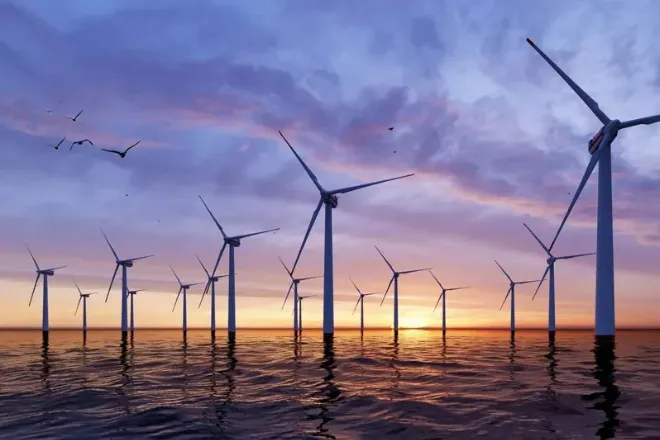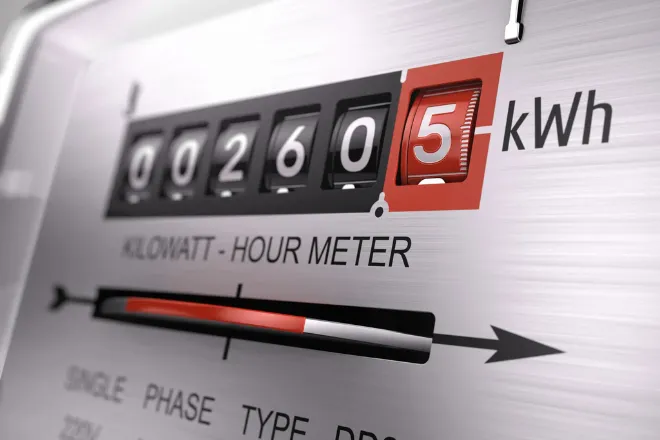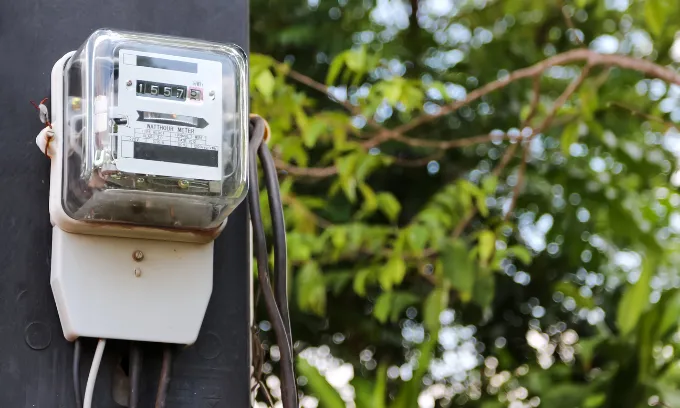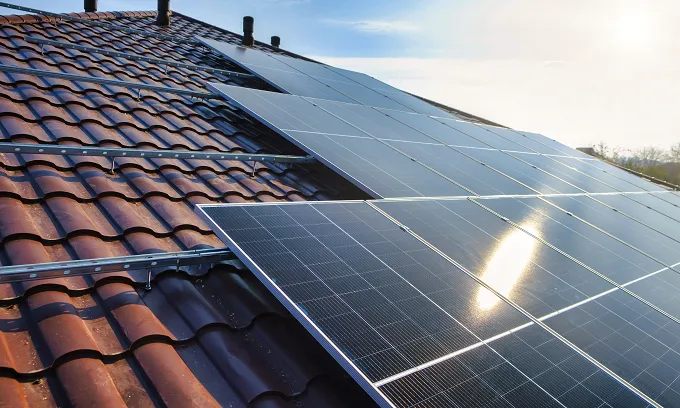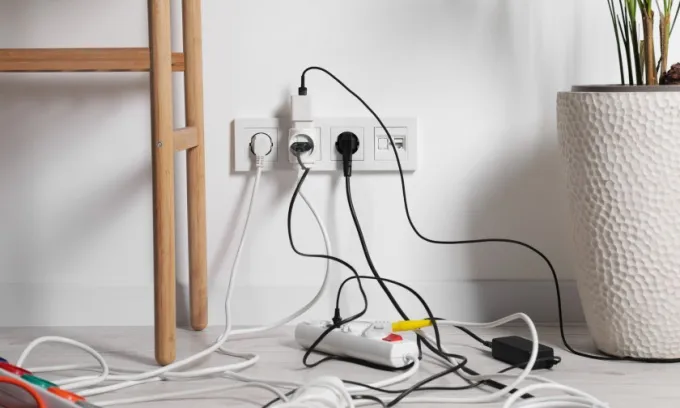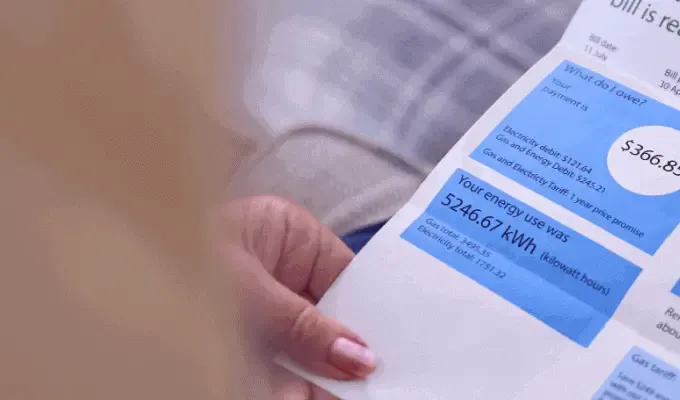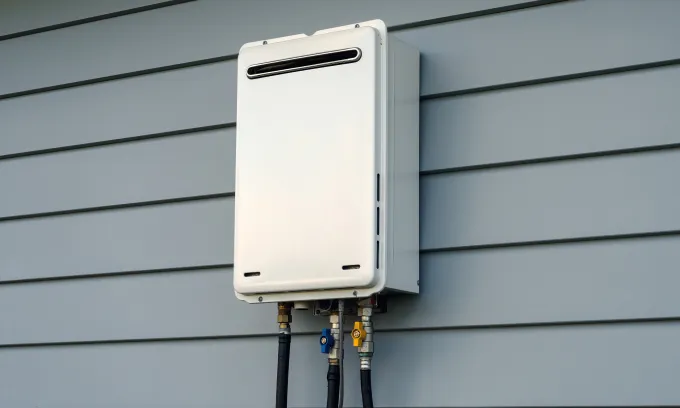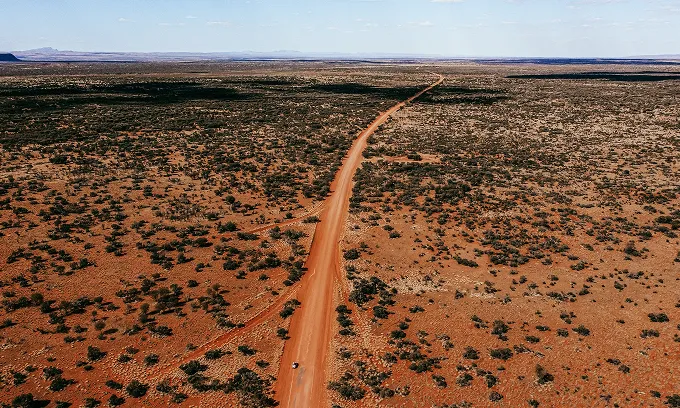How energy in Queensland works
Queensland’s energy market provides homes with two types of energy — electricity and gas.
To access this energy, you’ll first need to pick an energy provider and plan.
Energy providers bulk-buy electricity and/or gas from the wholesale energy market, to be repackaged and resold as ‘plans’ to customers like you.
You pay the providers for your power, but energy distributors transmit it to your home and maintain the grid’s infrastructure (e.g. utility poles, meters).
The entire Queensland energy market is ‘competition deregulated’ — meaning providers can compete for new customers, freely entering and exiting the market as they please.
In South East Queensland (SEQ), providers also enjoy the luxury of setting plans with prices and terms they like.
However, in regional Queensland, energy prices are regulated by the Queensland Competition Authority (QCA). Competition is welcomed, but providers must abide by the QCA’s pricing.
That’s why regional Queensland doesn’t have as many providers to choose from. In comparison, SEQ has over 20 electricity providers.
With different rules applying to different parts of Queensland, comparing providers and plans can be an intimidating process. However, with our energy comparison journey, comparing energy in Brisbane and SEQ is free, easy and can save you hundreds if you haven’t shopped around for a while.
This guide also simplifies what you need to know to navigate the Queensland energy market with confidence.
Electricity in Queensland explained
Electricity distributors in Queensland
In Queensland, electricity is supplied by three distributors in different regions:
Electricity distributors in QLD | Region in QLD |
|---|---|
Energex | SEQ |
Ergon Energy | Regional QLD |
Essential Energy | South QLD (near QLD’s border) |
Ergon Energy, unlike other distributors, is both a provider and distributor, being one of the only energy providers in regional Queensland.
It’s important to know your area’s electricity distributor in the event of a power outage.
Electricity plan prices are regulated in regional Queensland. You’ll save the most by switching if you live in SEQ, but switching in regional QLD won’t yield much (if any) savings.
Electricity plans in Queensland
All electricity plans in Australia bill you for every kilowatt hour (kWh) of electricity you consume.
In Queensland, there are two types of electricity plans — ‘market offers’ (available in SEQ and regional QLD) and ‘standing offers’ (in SEQ).
Both plan types and their estimated annual prices are calculated from a fixed, annual electricity usage figure set by the Australian Energy Regulator (AER).
For example, the annual electricity use estimate in the Energex network is 4,600 kWh a year. Electricity usage estimates vary between distributors.
Market offers
Market offers, by design, come with competitive rates and discounts to encourage new sign-ups:
- In regional QLD, all market offers will share the QCA’s regulated price. In SEQ, market offers will vary with different rates, discounts and contract lengths.
- You must sign up for a market offer to be on one.
- Each has a specified contract length (usually 12 months) before expiring.
- Many market offers are ‘variable rate’, which means their rates can increase or decrease regularly before they expire.
- A fixed rate plan freezes rates for the contract duration, but this feature isn’t common.
Standing offers (only available in SEQ)
Standing offers, also called the default market offer (DMO), follow the Queensland reference price set by the AER every 1 July.
The DMO protects Australians who don’t shop around for electricity plans from overpaying for electricity. The DMO’s regulated pricing is also a simple benchmark to compare market offers against, with price differences expressed as a percentage (%).
- If you’ve not changed plans for a long time, your previous market offer (if any) may have expired. That means your provider may have already moved you onto its standing offer.
- If you’re on a standing offer, you’re most likely paying the highest price a provider is willing to charge you. We strongly recommend switching to potentially save hundreds of dollars.
- Market offers can still be priced higher than standing offers, but are generally cheaper.
- Standing offers do not have a contract length, which means they never expire.
- Standing offers do not come with any discounts.
- The DMO’s price differs depending on the distributor covering your area.
The cheapest electricity plans in QLD
Here’s a handful of the cheapest electricity market offers on our database in QLD
Provider | Plan name | Est. annual cost (inc. all discounts) | Est. annual cost (ex. conditional discounts) | Reference price comparison (Basic Plan Information) |
|---|---|---|---|---|
Kogan | Kogan Energy for current FIRST members | $1,681 | $1,781 | 17% less |
Alinta Energy | HomeDeal Select | $1,779 | $1,779 | 17% less |
OVO Energy | The One Plan | $1,824 | $1,824 | 15% less |
Momentum Energy | Warm Welcome | $1,827 | $1,827 | 15% less |
Electricity prices and rates in Queensland
Like other states, electricity plans in Queensland can be broken down into two charges:
- Supply charges: A daily fixed cost you pay (in c/day) to stay connected to the grid.
- Usage charges: A cost that varies (in c/kWh) for every kWh of electricity you use.
In Queensland, plans come in four different tariffs, which refer to how they are priced:
Tariff name | Description | Do you need a smart meter installed? |
|---|---|---|
Single rate | A single rate throughout the day. | No. |
Time of use | Different rates in peak and off-peak periods. Rates are most expensive during peak hours | Yes, or a separate CL meter installed instead. |
Demand | Supply and usage charges plus a ‘demand’ | Yes. |
Controlled | Power-intensive appliances (e.g. hot water | Yes. |
On market offers, you can expect to see discounts applicable during a plan’s contract length or benefit period, such as:
- Conditional discounts: You get a discount if you meet certain conditions, such as paying on time.
- Dual fuel discount: Some providers offer a discount for buying both electricity and gas. But you might save more by buying these products separately from different providers. Always check which option saves you more money.
- Guaranteed discounts: A discount without any rules to follow, usually advertised as a percentage off the plan’s annual estimated price.
- Reward programs: Some plans give you points for paying bills, which you can use for rewards like theme park or movie tickets.
All of a plan’s features can be found outlined on a plan’s energy fact sheet, which are called Basic Product Information Sheets (BPIDs) in QLD, NSW and SA.
On the results page of Canstar’s in comparison QLD platform, you can access a plan’s BPID by clicking on the ‘Basic Plan Information’ prompt.
How to find the best energy plans in QLD
Picking the cheapest market offer compared to the DMO may be the path of least resistance, but it isn’t the most effective way to choose the right electricity plan.
You may also want to consider:
How much electricity you use
If an electricity plan has higher supply charges, you can often expect lower usage charges, and vice versa. If you barely use electricity, a plan with lower supply charges may be cheaper, but if you use a large amount of electricity, a plan with lower usage charges may be cheaper.
When you use the most electricity
- If you use more electricity during peak hours, a single rate tariff may be cheaper than a time of use (ToU) tariff.
- If you use less electricity during peak hours, a ToU, demand or flexible tariff may be cheaper than a single rate tariff.
- If you have an energy-hungry appliance (e.g. hot water system), a controlled load (CL) tariff could save you more if you’re comfortable with limiting its operating hours.
- Discounts only apply during a plan’s contract length or benefit period — this can be found on its BPID.
Be wary of hidden fees
Always study a BPID’s fine print — energy plans may be hiding other fees, such as disconnection or connection fees.
Don’t look at discounts alone
Never look at discounts in isolation. A big discount could be hiding inflated usage and supply charges.
Gas in Queensland explained
Gas distributors in Queensland
In Queensland, gas is transmitted by two distributors:
Electricity distributors in QLD | Region in QLD |
|---|---|
AllGas Energy | South suburbs of Brisbane, Gold Coast, Toowoomba and Oakey |
Australian Gas Networks (AGN) | Brisbane CBD, northern suburbs of Brisbane, Ipswich, Gladstone, Rockhampton, Bundaberg, Maryborough and Hervey Bay |
Typically, you’ll only reach out to your region’s gas distributor:
- To establish a gas connection at home.
- If there is a gas outage.
- If you need to submit a manual gas meter read you've done yourself.
Gas plans in Queensland
All gas plans measure your gas use in megajoules (MJ) instead of kWh.
Canstar helps you compare plans by showing estimated annual prices, which are derived from the same fixed, annual usage in Queensland of 8,300MJ per year. This estimate is calculated from the average usage advertised by a selection of retailers.
As with electricity, gas plans can be split into ‘standing’ and ‘market’ contracts:
Market contracts
Market contracts are retailer-set and priced. To encourage new sign-ups, market contracts frequently come with generous discounts and attractive rates.
- Market contracts can come with either fixed or variable usage rates.
- Market contracts can be more expensive than standing contracts, but this is rare.
- Variable usage rates can change regularly before a plan expires.
- Market contracts typically have a contract length of 12 months before expiring — you should compare variable plan pricing every 12 months.
Standing contracts
Standing contracts are regulated by the Queensland government to protect Australians who don’t shop around for gas plans from overpaying for gas.
- Customers who haven’t changed gas retailers in a long time will likely be on a standing contract.
- Standing contracts typically represent the highest price a gas provider will charge you for your gas use. You can often save hundreds of dollars by switching to a cheaper market offer.
- Standing contracts have no discounts.
- Standing contracts don’t expire, so you can stay on one as long as you want.
The cheapest gas providers in Queensland
Here’s a handful of the cheapest gas market contracts on our database in QLD
Provider | Plan name | Est. annual cost (inc. all discounts) | Est. annual cost (ex. conditional discounts) | Basic Plan Information |
|---|---|---|---|---|
Alinta Energy | HomeDeal Select | $662 | $662 | |
AGL | Smart Saver | $665 | $665 | |
Red Energy | Living Energy Saver | $727 | $727 | |
Origin Energy | Go Variable | $732 | $732 |
Gas prices and rates in Queensland
On any plan’s energy fact sheet, you’ll find that they come with two charges:
- Supply charges: A fixed cost (in c/day) you must pay to maintain your gas connection.
- Usage charges: A variable cost (in c/MJ) for every MJ of gas you use at home.
Usage charges can be further broken down into two tariffs:
- Single rate tariff: A flat rate that remains the same throughout the day.
- Block rate tariff: Gas usage is charged according to the quantity of gas used, which is measured in ‘blocks’. For example, the first block may be charged 3c/MJ for the first 20MJ used, 2.7c/MJ for the next 20MJ of usage, and 2.5c/MJ for the remainder.
If you’re on a market contract, you can expect to see discounts structured similarly to those offered with electricity plans.
All of this information is conveniently outlined on a plan’s fact sheet. Like electricity, you can also access each plan’s fact sheet by clicking on the ‘Basic Plan Information’ prompt below each plan name.
How to find the best gas plans in QLD
Knowing how you use gas
Like electricity, if your home uses little gas, a plan with lower supply charges may save you more money. Alternatively, if your home uses a lot of gas, a plan with lower usage charges may be more cost-effective.
The same rules apply to tariffs: if your home uses little gas, a single rate tariff may be the cheaper option. But if your home uses a lot of gas, a block rate tariff may be more affordable.
Understanding gas discounts and hidden fees
Gas discounts and hidden fees are both things to watch out for. Discounts on their own are not a good indicator of savings.
For example, discounts could be an excuse for providers to charge you more for your gas plan.
It’s important to review your energy plan’s finer details.
Solar in Queensland explained
Energy providers do not offer customers solar plans that supply homes with solar power exclusively — there’s simply no such thing.
Instead, your provider pays you credit for your excess solar with a feed in tariff.
Solar feed in tariffs in Queensland
A solar feed in tariff (FiT) pays you with a bill credit (in c/kWh) for the excess solar exported from your rooftop solar system to the power grid.
As of May 2025, Queensland is the state with the most solar system installations at 1.1 million.
Minimum solar feed in tariffs in Queensland
In SEQ (Energex network), there is no set minimum solar feed-in tariff — this is why shopping around for a plan is important, as providers compete for your business by offering more competitive FiTs.
In regional QLD (Ergon Energy network), customers have a minimum feed-in tariff rate of 8.66c/kWh. These rates are set by the Queensland Competition Authority (QCA).
Premium solar feed in tariffs in Queensland
The Solar Bonus Scheme’s 44c feed-in tariff, which started on 1 July 2008, is no longer available to new customers.
However, customers still on this tariff will continue to receive it until it expires on 1 July 2028.
For a deeper dive into solar FiTs in Queensland, you can visit our guide on the best solar feed-in tariffs in Queensland.
Choosing the right Queensland solar feed in tariff
- A higher solar FiT could be hiding higher usage and supply charges — you may end up paying more than you’re saving from your FiT’s credit.
- Some solar FiTs offer higher rates for a capped amount of exported solar before decreasing to a lower rate each day (e.g. 10c/kWh for the first 10kWh per day, 5c/kWh after).
- If you’re ready to install a new solar system, first work out how long it would take for the FiT to offset the upfront cost to install it.
How to switch energy plans in Queensland
Step 1: Check your eligibility to switch plans
Most homeowners and renters will be able to switch providers, but there are situations where switching isn’t possible.
Electricity
- Embedded networks: If you live in an apartment building or multi-residence, you could be living in an embedded network, which means a site owner (or manager) buys and sells energy to residents like you. While embedded network customers retain the right to switch plans and providers, the process is longer and more complicated. Speak to your site owner or body corporate to check if you’re living in an embedded network.
- Your landlord pays your bills: If your rent covers your power bills, you’re unlikely to be eligible to switch providers, especially if your landlord’s name is on your power bills. Generally, this arrangement can also be found on your original rental agreement or lease.
- Regional QLD: Customers in country and regional areas of Queensland do not have the option to choose their electricity provider. If you are unsure if your suburb is regulated, check with your current retailer.
Gas
- Check if you have a gas connection: If you’ve never held a gas plan before, you’ll need to make sure your home has a gas connection set up. Contact the gas distributor in your area to organise a gas connection. Keep in mind that new gas connections may require upfront costs.
- If your home is not located close to a gas mains: If your home can’t easily connect to the gas network, liquefied petroleum gas (LPG) is the natural alternative. Before committing to LPG, keep in mind that natural gas-powered appliances cannot use LPG as an energy source.
- Regional QLD: Customers in country and regional areas of Queensland do not have the option to choose their gas provider. If you are unsure if your suburb is regulated, check with your current retailer.
Step 2: Check your current bill
Refer to your latest power bill as a benchmark against other plans you’re interested in. Compare their rates and discounts to those of your current energy plan
Under the ‘energy usage summary’ section on your bill, you can see your estimated electricity/gas usage across the year as an estimate for future usage.
If you’d like help understanding your entire power bill, you can visit our guide on reading energy bills.
Step 3: Compare energy plans based on price
Using Canstar’s fuss-free comparison platform, you can sort plans available in your postcode by price.
You can also filter all results for your specific needs:
- Bill details
- Billing periods
The results will provide you with an estimated annual cost and direct access to a plan’s fact sheet.
Step 4: Check tariff type, FiTs and contract terms
Understanding your household energy use will reveal how you can benefit from different plans, tariff types and FiTs.
Study your options and never rush headfirst into a plan without understanding its terms and conditions — all this information can be found on a plan’s fact sheet.
Step 5: Review your current plan’s exit fees
Study your existing plan’s fact sheet for any hidden exit fees. There may be surcharges that may apply to your final bill.
Step 6: Sign up with your new provider
Follow Canstar’s energy comparison platform through to your new provider’s website. Keep in mind that switching will require a few extra steps:
Electricity
- You will need to provide your National Meter Identifier (NMI), which can be found on your electricity bills. This is how your provider knows which meter is yours.
- Your new provider may request a credit or identification check before confirming your plan.
- There is no need to contact your old provider and advise them of the switch. Your new provider will handle that for you.
- In Queensland, there is usually a 10-day cooling-off period after signing up for a new plan. This gives you time to thoroughly read through your new plan’s welcome pack or change your mind.
- Your electricity supply should not be interrupted during the switching process.
Gas
- You will need to provide your DPI (Delivery Point Identifier), which can be found on your gas bill. This is how your provider knows which meter is yours.
- Your new provider may request a credit or identification check before confirming your plan.
- There is no need to contact your old provider and advise them of the switch. Your new provider will handle that for you.
- A final meter reading will be conducted by your old provider to determine your final bill. The time it’s conducted will depend on when your previous meter read was and how frequent your billing cycle is.
- There is usually a 10-day cooling-off period after you sign up for your new plan. This gives you time to read through your new plan’s welcome pack before changing your mind.
- Your gas supply should not be interrupted during the switch.
Step 7: Review your plan as needed
It's worth reviewing your plan a few times a year. Keeping engaged with the market is the best way to ensure you’re always on the best value plan.
You may want to consider reviewing your plan:
- When your contract expires: Most providers will change your market offer plan (or market offer for gas) to their standing offer (standing contract for gas) once your initial contract has expired. This means your bill could increase dramatically.
- 1 July (only for electricity): When the DMO resets every year on 1 July, your electricity provider will typically adjust their rates.
- If your bill is too high: Those on a variable rate plan may experience multiple rate increases before a plan’s expiry. Customers may find themselves paying much more for their plan than when they signed up.
If you’re worried about your energy plan slipping your mind, sign up for our email newsletter and we’ll remind you when it's time to revisit it.
Queensland energy rebates and concessions
If you’re struggling to keep the lights on, you may be eligible for state government rebates.
Queensland Electricity and Natural Gas Rebate
Energy type
Electricity and gas
Eligibility
- QLD Seniors Card
- Services Australia or DVA Pensioner Concession Card
- Services Australia Health Care Card* (Electricity Rebate only)
- DVA Veteran Gold Card
- Asylum seeker status.
Rebate amount
- $386.34 GST included (electricity).
- $92.12 GST included (gas).
Where to apply
- Contact your electricity or gas provider.
- If you’re living in an embedded network, please contact your site operator.
- If you’re supplied electricity through an Ergon card-operated meter, visit the Ergon Energy QLD website.
Home Energy Emergency Assistance Scheme
Energy type
Electricity and gas
Eligibility
- Experienced a financial ‘emergency’ (e.g. unexpected loss of income and employment).
- Must hold a current concession card, earn equal to or less than the Australian Government’s maximum income rate for part-age pensioners or must be participating in a hardship program or payment plan.
Rebate amount
$720 one-off payment every two years.
Where to apply
- Contact your energy provider to assess your eligibility before giving you an application number.
- Use the application number to complete the online application.
Electricity Life Support Concession
Energy type
Electricity
Eligibility
- Applicants with free oxygen concentrators received through the Medical Aids Subsidy Scheme (MASS).
- Meet the criteria determined by MASS.
- Applicants with kidney dialysis machines must receive free home-based kidney dialysis machines from a Queensland Health hospital.
- Hold at least one of the following cards: Pensioner Concession Card, Health Card, Health Care Interim Voucher, Child Disability Allowance or a Queensland Seniors Card.
Rebate amount
- $1,063.301 per year for each oxygen concentrator.
- $712.07 per year for each kidney dialysis machine.
Where to apply
- Complete the Electricity Life Support Concession application form.
- If you’re applying for an oxygen concentrator, MASS should send you an application form within 14 days.
- If you’re applying for a kidney dialysis machine, the application form will be given to you by the Renal Unit at Queensland Health hospitals.
Medical Cooling and Heating Rebate
Energy type
Electricity
Eligibility
- Be a Queensland resident or a member at the primary place of residence requiring cooling or heating to stop medical symptoms from getting worse.
- Diagnosed with a qualifying medical condition, such as:
- Multiple sclerosis
- Autonomic system dysfunction
- Loss of skin integrity or ability to sweat
- Significant compromise of functioning (e.g. mobility) at extreme environmental temperatures.
- Hypersensitivity to extreme environmental temperatures.
- Have an air conditioning or heating unit at the primary residence you live in.
- Hold a DVA Pensioner Concession or Health Care card.
- Are responsible for paying your own energy bills.
Rebate amount
$522.09 split into quarterly payments. Must be renewed every two years.
Where to apply
Complete the MCHECS application (can be found online) and mail it to the address on the form (alternatively, you can send a copy to concessions@smartservice.qld.gov.au).
Source: Queensland Government, November 2025
FAQs about energy in QLD
Yes, but you should always check first to see if any of your electricity or gas plans come with any exit fees or conditional discounts.
A smart meter, also called a digital or advanced meter, records your electricity use in five to 30 minute intervals. This information is remotely sent to your electricity provider for billing purposes.
As part of the Australian Energy Market Commission’s (AEMC) accelerated smart meter rollout, all Queensland electricity customers will have a smart meter installed by 2030.
In Queensland, your existing provider is in charge of upgrading your home’s (or small business’s) old meter with a smart meter. They will organise a smart meter installation with an electrician, then facilitate the process with your local electricity distributor on your behalf.
If your existing meter breaks or you’re moving into a new property, you’ll probably be offered a smart meter by the retailer.
If you’d like to jump the queue with your smart meter installation, contact your electricity provider. However, expect to pay a surcharge.
GreenPower is a government-led initiative where energy providers agree to match some or all of your electricity use with power purchased from renewable energy generators. Opting in comes at an extra cost.
Depending on the provider, you can opt to add the cost of GreenPower to your plan. You can choose to add GreenPower to anywhere from 10% to 100% of your total electricity use.
For instance, if your energy usage rate is 25c/kWh, adding 50% GreenPower could bump it up to 30c/kWh. Half of your power usage will then be matched by the creation of renewable energy.
Queensland retailers offering GreenPower that we compare include:
- AGL
- Amber Electric
- CovaU Energy
- Diamond Energy
- Dodo Energy
- Energy Locals
- EnergyAustralia
- ENGIE
- Globird Energy
- Momentum Energy
- NectrOrigin Energy
- OVO Energy
- Pacific Blue
- Powershop Australia
- Red Energy
An embedded network is a contract between a site operator and an energy provider to supply electricity to buildings or homes in a fixed area. The operator then purchases electricity in bulk and resells it to their residents or tenants.
Unlike authorised energy retailers, site operators are validly exempt from the Australian Energy Regulator (AER) to resell energy — they are known as “exempt sellers”.
Embedded electricity networks in Queensland can be found in multi-residences like:
- Apartment complexes
- Caravan parks
- Retirement villages
- Shopping centres.



